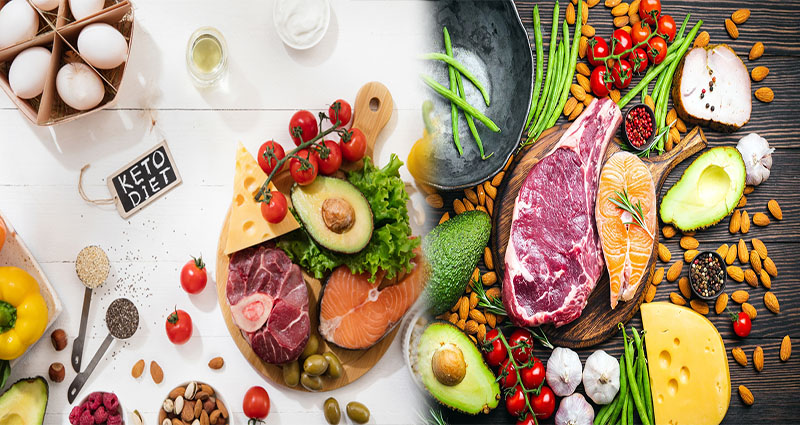If you’re trying to lose weight or just want to feel better, the keto diet might be a good fit for you. The keto diet is based around eating high-fat foods while keeping your carbs low and getting plenty of protein. Like many diets, it’s very simple in theory but can be difficult to stick with in practice—especially if you don’t know what to eat on a keto diet or are struggling with cravings for carbs. In this guide, we’ll cover everything from how the keto diet works to tips for making it sustainable over the long term so that you can reach your goals!
What is the keto diet?
The keto diet is a low-carb, high-fat diet that focuses on eating fat and protein while restricting your carbohydrate intake. In short, it’s the opposite of what most people are used to eating: no more grains or fruit–unless you can find them in their whole form (like an apple).
The idea behind the keto diet is that when your body burns fat for energy instead of carbs, it produces ketone bodies as byproducts. These are chemicals that can enter into cells and provide energy for them without needing any glucose from carbohydrates. To get into this state where you’re burning fat as fuel instead of glucose from carbs requires restricting your daily intake so that you’re eating fewer than 20 grams per day–the amount associated with moderate restriction according to some experts
Keto foods to eat and avoid
- Carbohydrates: Avoid bread, pasta and other starchy foods.
- Sugars: Fruit is high in sugar so it’s best to avoid this as well.
- Starchy Vegetables: Potatoes are off limits because they have a high glycemic index (GI) rating. That means they’ll cause an insulin spike when consumed which can lead to weight gain and diabetes if eaten too often or in large amounts over time. Other starchy vegetables like sweet potatoes are still okay as long as you don’t eat them every day or too much at once!
- Legumes: Beans, lentils, chickpeas etc should all be avoided because they contain lectins that can cause inflammation in the body which leads to weight gain and disease risk factors such as heart disease & cancer
How to start a keto diet
If you’re looking to start a keto diet, the first thing to do is get a plan. This is especially important if you have no idea what foods are allowed on a keto diet or how much protein or fat to eat in a day. A good place to start would be with our free 7-day meal plan, which will give you an idea of how much food and what kinds of food should make up your daily meals.
If this sounds overwhelming, don’t worry! We’ve also created a detailed guide on how to track macros on keto so that even beginners can get started easily – just follow these steps and soon enough all those numbers won’t seem so scary anymore!
Tracking macros on a keto diet
The keto diet is a low-carb, high-fat eating plan. Tracking macros is important because it’s one of the best ways to ensure you’re meeting your nutritional needs.
Macros are protein, fat and carbs–the building blocks of a keto diet. They’re different for everyone based on activity level and goals (weight loss or muscle gain). You can calculate them by using an app like MyFitnessPal or Cronometer (free) that tracks calories so easily!
There are ways to make the keto diet more sustainable.
There are ways to make the keto diet more sustainable.
- Make sure you’re getting all the nutrients you need. You might not be getting enough fibre or B vitamins, for example. To supplement with these nutrients, try eating more vegetables and fruit (which also have a low carb count).
- Focus on eating real, whole foods instead of processed ones as much as possible – especially if you’re planning on sticking with this diet long term! This will help ensure that your body is getting all the essential nutrients it needs while also helping curb cravings for junk food because they won’t satisfy your hunger like real food does!
In conclusion, the keto diet is an amazing way to lose weight and improve your health. It’s not easy to sustain, but with planning and perseverance you can make it work for you.












